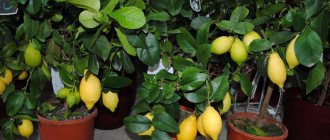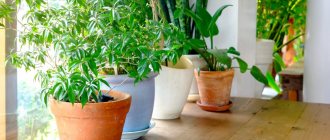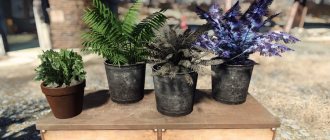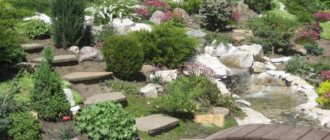The renovation is complete, but it seems like the interior is missing something? Try adding plants to your decor - they will add a touch of freshness and coziness, and the room will look “more alive” and cleaner. But it’s not enough to just put one flower. In order for the interior to sparkle with new colors, you need to familiarize yourself with the basics of phytodesign - it’s a whole science!
Ways to place plants in the interior
Many people are accustomed to the fact that if there are plants in a room, they must be on the windowsill or on the floor. But there are many more ways to effectively plant green spaces. In addition, in addition to their decorative function, flowers can also adjust the size of a room, hide flaws and emphasize its advantages. Most often, designers use the following interesting techniques:
- Vertical gardening. In this case, plants can either climb along the walls or hang from the ceiling. This technique helps to zone the space, dividing it into two parts. This is especially true for studio apartments or rooms where several people live.
- As a background. Plants can be not only an expressive highlight of the interior, but also a backdrop for creating a certain atmosphere. As a rule, this is used in eco-style - a green wall above a bed or sofa looks more appropriate here than ever.
- Visual increase in ceilings. Low ceilings put pressure psychologically, making the interior feel uncomfortable. There are many design ways to hide this flaw, one of which is the use of climbing plants. They seem to pull the walls up, giving volume and depth to the room.
When landscaping, it is important to consider the size of the room. The rule applies here for all types of decor: small objects for small rooms. Avoid large plants and opt for small hanging pots. To prevent them from looking lonely, place a small flower in an expressive vase on the table.
In rooms with wooden furniture, woody plants, such as palm trees, look very harmonious. But do not refuse them if the interior does not have wooden textures - plants are appropriate in almost any setting.
With the help of plants, you can create interesting compositions that highlight the features of the interior. For example, in a black and white room, create a green corner from several plants with different heights of stems and leaves - such differences will emphasize the contrasting color palette.
curly parsley
Spicy garden crops with beautiful foliage have become popular in the design of flower beds. To frame flower beds, spicy aromatic herbs and herbs are used, which are used in cooking.
Curly parsley is a practical and decorative option for the border. It forms a green mass that completely covers the soil, creating a lush, low ridge around the flower bed. The corrugated leaves remain decorative until frost, and in the spring young greenery quickly appears.
A green or floral border will highlight the beauty of flower beds and naturally divide the area between the paths and the lawn. We have compiled a selection of compact ornamental crops for different growing conditions that will decorate the site and hide minor flaws in the landscape design.
How to properly use plants in the interior
Plants, as we have already noted, can play both the role of a background and be accents. In the first case, the furniture should be noticeable so that it does not get lost in the interior. But when you want to highlight plants, you need to choose a neutral background. Avoid brightly decorated walls, wallpaper with large patterns and large paintings. Also avoid furniture with expressive upholstery - it should not attract all the attention.
Plants with large leaves can be placed against wallpaper with a small, discreet pattern, such as polka dots or stripes. But for small-leaved ones it is worth choosing a plain background, otherwise the leaves will merge with it. This recommendation will help make the interior balanced and harmonious.
When adding green notes to the environment, you need to not overdo it. Plants are just “notes”; they are not the main subject in the interior, but only complement it, unless, of course, you plan to turn the room into a greenhouse. To keep the interior from looking like a jungle, use a moderate number of plants. You can even limit yourself to one expressive plant and complement it with thematic decor - pillows with plant images, curtains with a tropical pattern or wicker furniture.
To highlight simple plants, plant them in original colored vases. But for large and expressive flowers it is better to use simple pots, otherwise the plant will attract too much attention. Of course, you need to remember that plants are not simple decoration that you can set and forget about. Each crop requires special conditions, proper watering and care. When choosing greens, you should pay attention to this first, otherwise the plants will simply die.
Carefully read the rules for caring for the plants you like. Try to create the necessary conditions for them, and if that doesn’t work, look for other crops. Fortunately, there will be no problems with this now - there are many articles on the Internet about caring for plants.
How to make a mini garden in a pot with your own hands
This work is created mainly using improvised means, and making it is not as difficult as it seems. It is important to have a good mood, thanks to which your imagination will quickly tell you how to turn seemingly unnecessary things into a real home masterpiece.
Deciding on the general idea and style of the composition
As already mentioned, before creating a garden you need to decide what concept the future composition will have. You need to proceed from the available means and characteristics of the plants. It is better to decide in advance where exactly the miniature garden will be located. Then it is easier to choose which flowers will be included in the composition - shade-loving or vice versa, needing light, tall or short, etc. When it comes to home use of a future work, you need to take into account the interior of the room - what tones predominate, what kind of lighting, features of the room’s space, furniture, etc.
DIY mini-garden in a pot (video)
In order for the garden to fit organically into the interior, you need to think carefully about its plot. The number of ideas is endless, and here are just a few of them:
- island in the tropics;
- mini-zoo (if there are animal figures);
- a themed kindergarten dedicated to some celebration (birthday, wedding anniversary, etc.);
- alpine slides;
- Japanese kindergarten;
- Amazonian jungle;
- a skit based on a famous story, song, fairy tale (it will be especially interesting for children);
- miniature of your own country garden;
- Chinese kindergarten;
- medieval castle with fields around;
- a garden with tiers (like the Hanging Gardens of Babylon);
- seasonal theme (spring, summer garden);
- country style garden and many others.
The easiest way to get inspired is to see the garden in real life at an exhibition, in a store or at a visit. Photographs of finished compositions are no less effective. You can take all the best examples as a basis and create your own masterpiece. Also a good source of inspiration and ideas is a master class by professional florists. Of course, you can come up with your own unique version - it will be even more interesting to work with.
Choosing a planting container for a mini-garden
To get started, it is important to choose the basis of the garden - the container in which it will be placed. Almost any pot, bathtub, old sink and many other available tools are suitable for these purposes. It is important that the vessel is high enough - preferably 20-30 cm and as wide as required. Usually gardens are made on a wide horizontal surface, so the width of the container is of great importance.
The shape of the container can be any - round, oval, square, curved, etc. Warm-colored ceramic products will look organically fit into the design (just like the usual flower pots). However, the choice of color and material is more a matter of taste. The only main requirement is the presence of holes to drain excess water.
It is better to decorate the bottom of the container with pebbles and small crushed stones or other stones to ensure drainage. The outside of the container can be beautifully decorated with colored stones and shells - this is where imagination comes into play again. First, a solution is made from equal proportions of sand and cement, to which water is added until a dough-like mass is obtained. The freshly prepared mixture is carefully spread on the edges of the container, then the decoration elements are stuck on and left to dry.
An interesting option is when a porous stone that can allow moisture to pass through is used as a container , for example, limestone, tuff, shell rock. They are usually used in summer cottages. Flower arrangements in stones look more natural and interesting.
And perhaps the most original option is a garden in a bowl (small container). This variety will appeal to lovers of minimalism. You can plant the smallest plants, and decorative elements can be made up of small details (for example, a small house with a birdhouse).
Plants and mini-flowers for a miniature garden
Perhaps the main criterion in selecting plants for a future composition is not too vigorous growth of flowers. The fact is that it is better not to replant plants or cut off excess greenery too often, otherwise it will harm both the appearance of the garden and its inhabitants. It is also worth considering that if you decorate the composition with stones, the roots of the plants should be unpretentious and strong enough to break through them.
Of course, an important factor is the decorative value of the plant, that is, how beautiful it will look in a pot. Here are some good tricks to know:
- Helxina grows very well and produces a lot of greenery that will decorate the garden;
- miniature roses, Saintpaulias, streptocarpus will help make the garden bright and original - as if we have a miniature flowerbed in front of us;
- fittonia has small flowers of different shades - white, red, pink, green: this will give a beautiful color scheme in the garden;
- dwarf spruce serves as an excellent prototype of a tree - it is better to plant it in a central place;
- thick leaves of pachyphytum will emphasize the exotic theme;
- ivy will give the composition an original cover and graceful forms;
- different types of cacti, due to their diversity, will fit perfectly into almost any flower arrangement - in the form of a mini-palm tree, tree or cactus itself, if the garden, for example, has Mexican motifs.
Rules for composition, placement and planting of plants
The rules for composing a flower arrangement are related to the design features of the garden. The main goal is to combine flowers favorably and highlight the advantages of each of them. Florists recommend proceeding from the following general principles:
- if the main view of the garden is on one side, then it is better to plant large plants in the background, and smaller ones in the front;
- if it is assumed that access to the container will be from all sides. then the bush trees should be placed in the center, and small flowers - along the edges;
- to create dynamics, it is better to plant plants not one after another, but in cascades and not in a straight line, but in zigzags; perhaps you should come up with your own patterns;
- A very correct decision would be to arrange a beautiful background and lighting for the garden so that it looks as attractive as possible.
Decorating a mini-garden with decorative elements
Decorative elements of the garden can be very diverse. They should not only fit harmoniously into the composition, but also favorably emphasize the advantages of the plants, as well as create a pleasant mood for contemplators. A variety of means can be used:
- materials for decoration (sand, colored stones, shells, pebbles);
- figurines of animals and people;
- models of houses, castles, fences, arches;
- details for creating natural landscapes (such as rocky terrain, prairie, waterfall and more);
- home comfort items (benches, chairs);
- themed figures (heroes of fairy tales, cartoons).
There can be a lot of ideas. When you have chosen the necessary decorations, it is important to fit them correctly into the design, and in the case of figurines, to fix them in the ground. You can simply dig them in, or you can pre-attach them to a platform (for example, a house), which is fixed in the ground.
Basics of phytodesign
The easiest way to green your interior is to seek help from an experienced designer. But this can be expensive, and furnishing your home yourself is much more pleasant. Although it will not meet all the rules of interior design, it will definitely acquire uniqueness and reflect the character of the owner. And to do this competently, you need to familiarize yourself with the basic nuances of phytodesign.
When choosing plants, you need to remember that they not only decorate the premises, but also require special conditions and proper care. But that’s not all: some crops can be harmful and even life-threatening for family members. For example, very often you can find Dieffenbachia in the interiors of residential buildings. But it is not recommended to install it if there are small children or animals in the family - the juice of the plant is quite poisonous.
Choose plants that have a positive effect on human well-being. Decorate your interior with these crops, and you will forever forget about stress and poor health:
- Lavender is a real antidepressant. It relieves headaches, helps you fall asleep faster and get rid of anxious thoughts. The pleasant smell of flowers reduces high heart rate and relaxes.
- Physalis is a very bright and beautiful plant with expressive fruits. But in addition to its attractive appearance, it is also very uplifting.
- Geranium has such a fragrant scent that it can significantly reduce anxiety levels.
- Peppermint is a plant used everywhere. You can even find mint chocolates on sale, let alone interior decor. It relieves fatigue and irritability, and in the course of research by psychologists it was even found that mint helps fight depression.
- Rose is a very beautiful plant that has become a symbol of love and attention. Bouquets of roses add romance and luxury to the interior, and give the owner a good mood.
- Aloe is another crop that can compete with mint in popularity and breadth of use. Aloe is used in medicine and cosmetology, and even helps with weight loss. The juice of this plant is indicated for chronic gastritis and loss of appetite. And in the interior it perfectly purifies the air, fills it with oxygen and helps you fall asleep. In ancient Egypt, it was believed that aloe could drive away evil spirits.
Another interesting feature of some crops is the ability to purify the air, removing dangerous fumes from it. If you have recently painted the walls, carried out renovations, or your room faces the roadway, filter plants will come in handy more than ever.
In 1989, NASA conducted a study that identified the best plants for cleaning rooms. Some of them can neutralize air pollution by more than 85%. The best purifying plants that look interesting and decorate the interior:
- Anthurium Andre humidifies the air, purifying it of harmful xylene and converting it into safe chemical compounds.
- Golden lotus is perfect for installation in the shade. It purifies the air from formaldehyde and benzene. However, it is worth remembering that this plant is very poisonous, so keep it away from children and animals.
- Chlorophytum. The plant received another name, “spider,” due to its long, spreading leaves. Eliminates benzene and formaldehyde, in addition, it is completely safe for children and animals.
- Climbing ivy. Another great choice for dimly lit rooms. The shade-loving plant actively fights against benzene, formaldehyde and carbon monoxide, and also eliminates mold.
Indoor plants in the kitchen interior
A favorable location for most plants. All conditions for their comfortable growth are provided here: moderate humidity, frequent ventilation and plenty of sunlight. But there are some peculiarities here too.
Plants that love the warmth of the sun should be placed on the windowsill: dracaena, monstera, agave, orchid and, of course, cactus. Shade-loving crops should be grown in the darkest corners of the kitchen - on small tables away from the window or on special shelves. Do not place plants near the refrigerator and stove - the air in these places is either too cold or too hot - this is destructive for many crops. The same recommendation applies to the sink - splashes of detergent and grease will splash on plants standing next to it.
A selection of tall flowers for the home
The dimensions of a large room will emphasize large crops. A luxurious plant in a voluminous planter will become a noticeable spot in the interior. With the help of living decor, designers pay attention to the beauty of the design, making the space harmonious and close to nature.
Philodendron
An evergreen perennial with huge curly leaves looks gorgeous in the interior of a living room or office. A tropical flower with fleshy stems up to 2 m in length is supported on a support. The price for a young specimen (up to 40 cm) is from 1000 rubles, the cost of adult species reaches 25-30 thousand. The following varieties are grown in the apartment:
- warty;
- Sello;
- guitar-shaped;
- climbing
Philodendron prefers to grow in diffuse sun conditions. The culture grows at temperatures within 20-25 C; when it is hot, you will have to increase the humidity or turn on the air conditioning. The plant does not like drafts and will die at 15 C. Water the flower abundantly in spring and summer, drain the remaining liquid from the pan, in autumn and winter - as the soil dries out.
Large plant for the interior Source journal.homemania.ru
Hibiscus
Chinese rose is a beautiful plant that pleases with huge bright buds. The price of rooted cuttings is from 70 rubles, large specimens from 1.5 meters cost 500 rubles. The crop is grown in a shaded place or in diffused light. Flowering lasts from spring to early autumn. The decorative species prefers to develop in a temperature range of 18-20 C, and falls asleep at 15 C.
To stimulate the appearance of buds, old branches are pruned at the beginning of the growing season. From April to September, fertilizing for flowering species is applied every 2 weeks. The culture loves high humidity, so in hot weather it is sprayed with water from a spray bottle. Water the Chinese rose after the soil has dried to a depth of 2 cm.
Blooming look for the interior Source yapokupayu.ru
The price of a luxury palm with fan-shaped leaves depends on the size. Young flowers up to 40 cm in height cost from 1.9 thousand rubles, teenagers up to 1 m - from 9 thousand. For healthy development, bright but diffused light is needed. In spring and summer, the crop grows at temperatures from 20 to 28 C, in winter – within 14-18 C.
Liviston in room design Source roomble.com
From April to September, abundant watering and regular application of fertilizers for palm trees. In hot weather, increase humidity by spraying and wiping the foliage. From October, the flower stops its growing process and irrigation is reduced to a minimum.
Plants in the living room interior
This is the heart of all housing, and special attention is paid to its interior. In most cases, this is a spacious room, so tall and large plants in large vases look appropriate here. Show originality and abandon classic pots in favor of floor racks and whatnots - they will turn plants into the highlight of the interior.
Bedroom with indoor plants
The atmosphere here should be calm and peaceful. The decor, including plants, is selected precisely according to this principle. Do not use flowers with strong aromas - they will interfere with sleep, and in the morning you risk waking up with a headache, because you have been breathing these smells all night.
Just a couple of non-flowering and slow-growing crops will be enough, which will look especially beautiful in a pot over the bed. Avoid an abundance of lilies and orchids - they absorb a lot of oxygen, which will cause dizziness and poor health of the owner.
Plants in the hallway
A person is greeted by his clothes, and an apartment by his hallway. It is she who makes the first impression on guests, so you need to try to make it cozy and stylish.
As a rule, the hallway is quite cramped and lacks light. For this reason, it is worth choosing plants that tolerate darkness well: begonias, violets, clivias, fuchsias, chlorophytum, aspidistras. Plants framing mirrors, paintings and shelves look interesting. If there is a niche in the hallway, it will be an excellent place for a large outdoor plant in a vase.
Placement of a mini-kindergarten and subsequent care
It is better to place the composition in the largest room in the house. As for the garden plot, it is more correct to place the mini-garden in the main place - often it is located on the main road on the way to the house. If there are several potted gardens, they can be placed right around the perimeter, or placed in a row so that each is clearly visible from the main road. It is also important to consider which plants will grow – light- or shade-loving.
A garden requires more attention to care than a regular potted plant. If mostly unpretentious plants are planted (cacti, succulents), then there are no special recommendations for care. If there are more demanding ones (decorative roses), then you need to carefully monitor the watering regime. When they fade, you need to remove fallen petals, dig up wilted plants and make sure that neighboring bushes do not interfere with each other. Perhaps some of them would be better planted.
Specific recommendations for maintaining a miniature garden can be determined based on the type of plants that live in it.
Live indoor plants in the bathroom
Plants in the bathroom are quite rare, and the reason for this is poor lighting, high humidity and lack of space. However, owners of private houses are lucky, because the bathroom can be equipped with windows. Then it can be decorated with moisture-loving plants. Monstera, violet, and Japanese fatsia are perfect.
If there are no windows, but you still want to add green notes to the bathroom, use artificial plants. Some people think that such decor makes the interior lifeless, but you just have to look hard and you can easily find imitations of plants that cannot be distinguished from the real ones.
Indoor plants add coziness to any interior and create a homely atmosphere. The main thing is to choose them correctly, taking into account the characteristics of each culture. Don’t forget to water your flowers on time, and they will delight you with their beauty for many years!
Mini-garden in a pot: distinctive features and options for use in garden and home decor
Before you start creating such a garden, you need to be inspired by some initial idea. Perhaps the garden will be arranged in tiers and lined with beautiful pebbles. Perhaps, in addition to plants, the decoration will include interior items (a model of a house or a castle). Or decor using multi-colored stones will highlight small trees. Here you need to use your wildest imaginations - even broken pots will be an excellent tool for developing a design.
A mini-garden differs from ordinary window flowers and from a garden plot. The following features can be highlighted:
- Compared to the plants on the window, the garden must have its own flower and plant composition, based on a specific plot, as well as improvised means, decorative figures, and special materials;
- the garden also looks much more varied and interesting than single-standing plants; it can be transformed, change the scenery and even replant individual plants;
- Compared to a regular garden plot, a mini-garden is mobile and can be at home all year round and please the eye.











